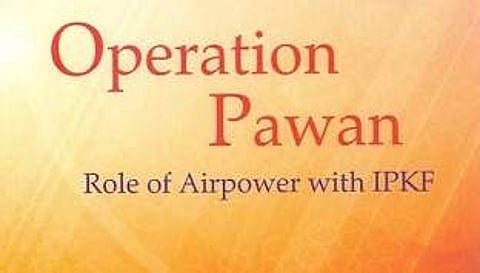

COLOMBO: Soon after the July 1983 anti-Tamil riots in Sri Lanka and the influx of Tamil refugees into Tamil Nadu, the training of Tamil militants began in Tamil Nadu with the knowledge and patronage of the Tamil Nadu government. India’s national intelligence agencies started their training program only in 1984, when New Delhi felt that Tamil Nadu’s initiative in the matter might not be in the overall Indian interest, says Air Marshal (Rtd) Bharat Kumar in his book Operation Pawan: Role of Airpower with IPKF.
“The training of Tamil rebels had commenced in Tamil Nadu with full knowledge and in some cases, under the patronage of the state government. New Delhi’s suggestion to rein in these Tamil groups were not acceptable to Tamil Nadu leaders. Since the Central government could not afford Tamil Nadu ‘invading’ Sri Lanka, various Indian intelligence agencies also got into the act from 1984 onward. It was better that the Indian state got involved in Sri Lanka rather than the Tamil Nadu government because of obvious repercussions,” Bharat Kumar says.
Unlike Tamil Nadu leaders M.G.Ramachandran and M.Karunanidhi, Indian Prime Ministers Indira Gandhi and Rajiv Gandhi were not for an independent Tamil state in Sri Lanka. They saw the arming of the Tamil militants as an instrument to pressurize the Sri Lankan government to find a permanent solution to the Sri Lankan Tamil problem.
This is why, even as the training of Sri Lankan Tamil militants was going on India in 1984, Prime Minister Rajiv Gandhi sent, in December that year, “an undisclosed number of Indian warships to patrol the Palk Strait.”
Quoting Edgar O’Ballance, The Cyanide war: Tamil Insurrection in Sri Lanka 1977-88, Bharat Kumar says: “He (Rajiv Gandhi) also decided to reduce the flow of arms from Tamil Nadu to Tamil insurgents in Sri Lanka. And on 29 March 1985, the Indian Coast Guard began selectively stopping and searching craft suspected of ferrying weapons across the Palk Strait.”
However, despite these steps, by early 1987, there were fears of the LTTE becoming too strong. India launched “Operation Tiger” in November 1986 to disarm LTTE cadres in India and to take over their communication equipment .This action took place just before the SAARC summit in Bangalore. But to generate goodwill before the summit, where Rajiv Gandhi wanted LTTE chief Prabhakaran and Sri Lankan President J.R.Jayewardene (JR) to meet and thrash out issues, the seized equipment were released.
When the JR-Prabhakaran talks broke down with JR saying a firm “no” to the merger of the Northern and Eastern Provinces to form a single Tamil-speaking province, and Prabhakaran sticking firmly to his demand for an independent Eelam, “Rajiv Gandhi developed an aversion for Prabhakaran’s intransigence, and became more favorably inclined to Jayewardene’s views.”
By 1986, the LTTE had established its dominance in the Northern peninsula, subjugating the rival Tamil militant groups and at the same time defending the peninsula against the Sri Lankan forces. The situation worsened in January 1987 when the Tigers announced a plan to establish a separate administration in Jaffna and the Sri Lankan government immediately imposed an embargo on food and fuel supplies to the North creating “near famine conditions.”
New Delhi’s response to the developing situation was to draw up contingencies plans based on various scenarios, some of them bizarre. The “worst case” scenario, according to Brig (later General ) V.P.Malik, was Colombo inviting countries inimical to India to render military assistance and forcing India to carry out an “opposed landing and intervention.” Eventually, political efforts resulted in President Jayewardene agreeing to sign the India-Sri Lanka Accord in July 1987 and accept an Indian Peace Keeping Force (IPKF) to ensure the implementation of the Accord.